Cyclone survivors could face “second wave”
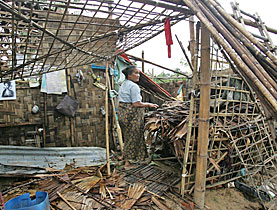
Nearly two weeks after a deadly cyclone tore through Myanmar, the west only knows a fraction of the extent of the disaster, says the Swissaid charity.
And there could be worse to come, according to aid agencies. Heavy rain is forecast to hit the cyclone-ravaged Irrawaddy delta over the coming days, and the slow response to help an estimated 2.5 million destitute people could lead to a second wave of deaths.
“Westerners only know the tip of the iceberg of the humanitarian situation,” said Salai Khin Maung Aye, coordinator for Swissaid in Yangon, Myanmar.
Salai and his team recently visited parts of the region devastated by the deadly storm, which left up to 128,000 people dead and an estimated 2.5 million people destitute, according to the Red Cross and United Nations.
Swissaid, one of only a handful of Swiss non-governmental organisations in the country, has been delivering rice, mosquito nets and emergency shelter material to nearly 15,000 people through local partners.
The Swiss organisation says the situation in the south remains dramatic.
“According to eye witnesses in the affected delta region, there is a serious risk of famine and diseases in areas that have not been reached. People fight each other for food, eat rotten food and drink unsafe water,” Sarah Mader, Swissaid’s desk officer for Myanmar, told swissinfo.
Rice
Monasteries and schools are sheltering the homeless and the displaced are clamouring to get into these privately-run centres rather than government-run camps.
Along the river bank in Bogalay, rotting corpses are still tangled in the scrubs. Villagers continue to fish, wash and bathe in the same river.
“A long-term problem is that people in the delta region should plant rice in the next two-three weeks. If they can’t buy rice seed, they’ll be needing assistance for quite some time,” says Hugo Rämi, spokesman for the Swiss government’s Agency for Development and Cooperation (SDC) in Bangkok.
The Food and Agriculture Organization (FAO) said on Thursday that some 20 per cent of rice fields in five declared disaster zones, including the southern Irrawaddy delta rice bowl, were damaged by the cyclone.
Operational constraints
The current relief operation is described as piecemeal and uncoordinated. Supplies of food, medicine and temporary shelter are slowly reaching survivors but aid agencies say they are nowhere near enough.
Many more boats, trucks and helicopters are needed to get the supplies to the communities most in need – and far more expert staff.
“It’s really difficult to shift goods to the affected region,” agreed Rämi.
“This morning I heard that if the same levels of relief goods continue to arrive at Yangon airport there will be a bottleneck as it can’t be distributed.”
Roadblocks
Myanmar’s military rulers have tightened roadblocks, turning back international relief workers to prevent them from reaching the worst-hit areas, while allowing locals to pass.
“The picture is mixed,” said Rämi. “The government don’t want foreigners at the forefront of the relief operation, but our local partners, like the Myanmar Red Cross, have good access.”
“The aid agencies I speak to are totally frustrated and angry,” said Mader. “And the monsoon season (May-September) is due to start – another reason that aid should accelerate.”
According to Peter Rees, head of International Federation of Red Cross and Red Crescent operations support in Geneva, there is a real risk of increased and more severe flooding over the coming days.
This could force people to leave areas that they thought were safe in search of new dry land, which could complicate the relief efforts already underway.
swissinfo, Simon Bradley in Geneva
Estimates of the number of dead from Cyclone Nargis have risen steadily since it hit on May 3.
Shortly after the cyclone, several thousand were feared to have died. The government now says that 43,318 are dead and 27,838 missing, while the UN believes the death toll could exceed 100,000, while the Red Cross now estimates it is between 68,833 and 127,990.
The country’s military dictatorship refused to allow major aid deliveries to enter the country in the days immediately following the storm. Foreign aid has now started to slowly arrive.
Nargis was the worst cyclone to hit Southeast Asia since 143,000 people were killed in neighbouring Bangladesh in 1991. The 2004 Indian Ocean tsunami killed more than 230,000 people.
The UN says it is now seeking almost $200 million (SFr210.6 million) to provide help for cyclone survivors. So far, donor nations have given or pledged $150 million.
Myanmar, formerly Burma, has been under military rule since 1962.
A massive hike in fuel prices last September sparked almost two weeks of sustained popular protest, which were halted when police and soldiers opened fire on demonstrators.
The UN says the junta is also holding more than 1,100 political prisoners.
Nobel peace laureate and opposition leader Aung San Suu Kyi has been under house arrest for 11 of the past 17 years. ICRC staff have not visited her since September 2003.
On Thursday the ruling military junta announced that it had won overwhelming approval in a referendum on a constitution enshrining its grip on power.
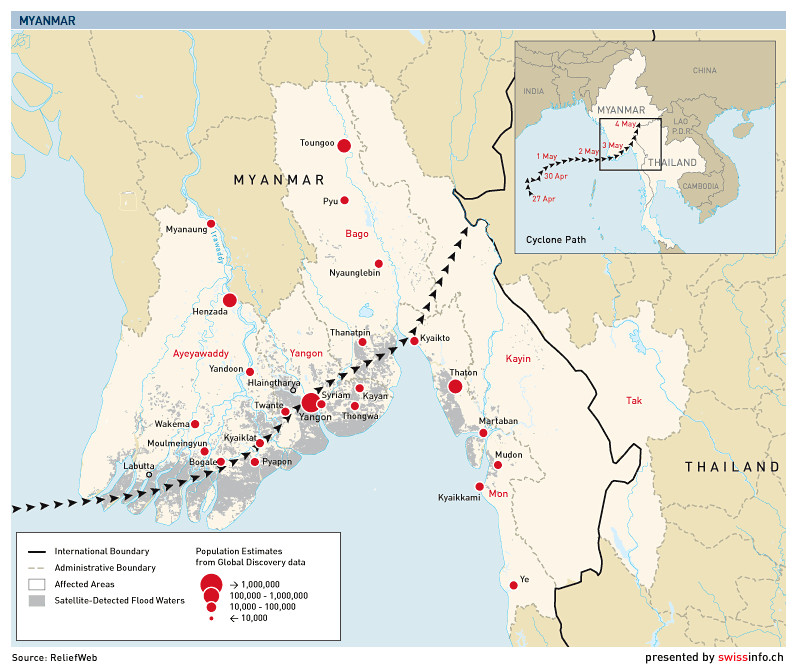

In compliance with the JTI standards
More: SWI swissinfo.ch certified by the Journalism Trust Initiative


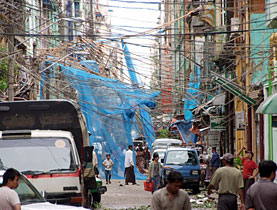
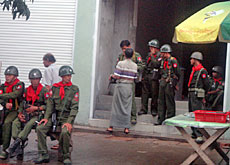
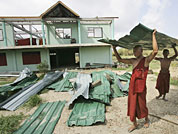
You can find an overview of ongoing debates with our journalists here. Please join us!
If you want to start a conversation about a topic raised in this article or want to report factual errors, email us at english@swissinfo.ch.